This column is from The MagPi issue 57. You can download a PDF of the full issue for free, or subscribe to receive the print edition in your mailbox or the digital edition on your tablet. All proceeds from the print and digital editions help the Raspberry Pi Foundation achieve its charitable goals.
“I first set up my YouTube channel because I noticed a massive lack of video tutorials for the Raspberry Pi,” explains Matthew Timmons-Brown, known to many as The Raspberry Pi Guy. At 18 years old, the Cambridge-based student has more than 60 000 subscribers to his channel, making his account the most successful Raspberry Pi–specific YouTube account to date.
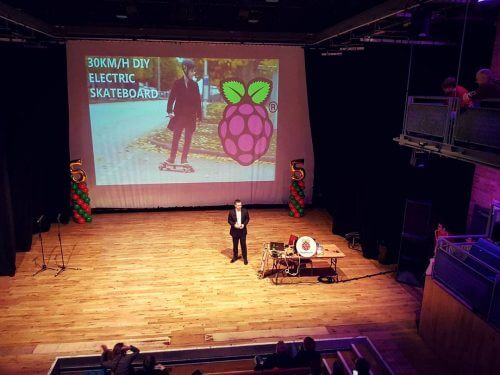
Matt gives a talk at the Raspberry Pi 5th Birthday weekend event
The Raspberry Pi Guy
If you’ve attended a Raspberry Pi event, there’s a good chance you’ve already met Matt. And if not, you’ll have no doubt come across one or more of his tutorials and builds online. On more than one occasion, his work has featured on the Raspberry Pi blog, with his yearly Raspberry Pi roundup videos being a staple of the birthday celebrations.
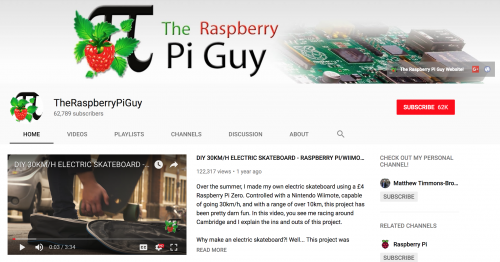
With his website, Matt aimed to collect together “the many strands of The Raspberry Pi Guy” into one, neat, cohesive resource — and it works. From newcomers to the credit card-sized computer to hardened Pi veterans, The Raspberry Pi Guy offers aid and inspiration for many. Looking for a review of the Raspberry Pi Zero W? He’s filmed one. Looking for a step-by-step guide to building a Pi-powered Amazon Alexa? No problem, there’s one of those too.
Make your Raspberry Pi artificially intelligent! – Amazon Alexa Personal Assistant Tutorial
Artificial Intelligence. A hefty topic that has dominated the field since computers were first conceived. What if I told you that you could put an artificial intelligence service on your own $30 computer?! That’s right! In this tutorial I will show you how to create your own artificially intelligent personal assistant, using Amazon’s Alexa voice recognition and information service!
Raspberry Pi electric skateboard
Last summer, Matt introduced the world to his Raspberry Pi-controlled electric skateboard, soon finding himself plastered over local press as well as the BBC and tech sites like Adafruit and geek.com. And there’s no question as to why the build was so popular. With YouTubers such as Casey Neistat increasing the demand for electric skateboards on a near-daily basis, the call for a cheaper, home-brew version has quickly grown.
DIY 30KM/H ELECTRIC SKATEBOARD – RASPBERRY PI/WIIMOTE POWERED
Over the summer, I made my own electric skateboard using a £4 Raspberry Pi Zero. Controlled with a Nintendo Wiimote, capable of going 30km/h, and with a range of over 10km, this project has been pretty darn fun. In this video, you see me racing around Cambridge and I explain the ins and outs of this project.
Using a Raspberry Pi Zero, a Nintendo Wii Remote, and a little help from members of the Cambridge Makespace community, Matt built a board capable of reaching 30km/h, with a battery range of 10km per charge. Alongside Neistat, Matt attributes the project inspiration to Australian student Tim Maier, whose build we previously covered in The MagPi.
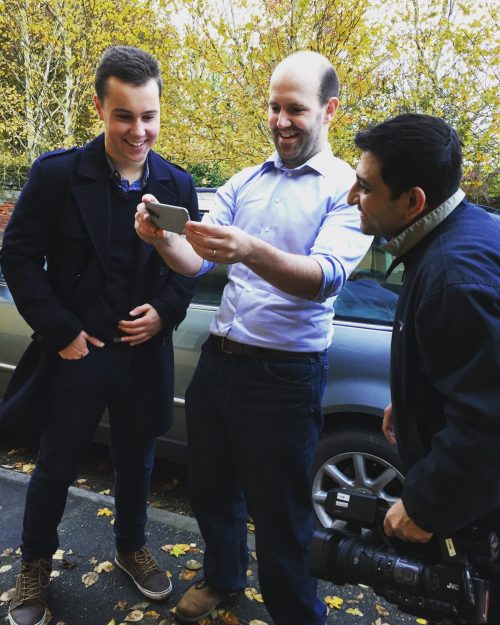
LiDAR
Despite the success and the fun of the electric skateboard (including convincing Raspberry Pi Trading CEO Eben Upton to have a go for local television news coverage), the project Matt is most proud of is his wireless LiDAR system for theoretical use on the Mars rovers.
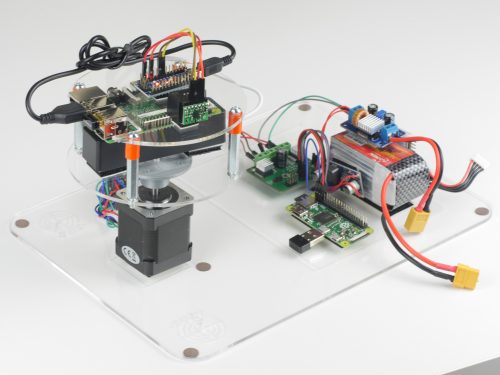
Using a tablet app to define the angles, Matt’s A Level coursework LiDAR build scans the surrounding area, returning the results to the touchscreen, where they can be manipulated by the user. With his passion for the cosmos and the International Space Station, it’s no wonder that this is Matt’s proudest build.
Built for his A Level Computer Science coursework, the build demonstrates Matt’s passion for space and physics. Used as a means of surveying terrain, LiDAR uses laser light to measure distance, allowing users to create 3D-scanned, high-resolution maps of a specific area. It is a perfect technology for exploring unknown worlds.
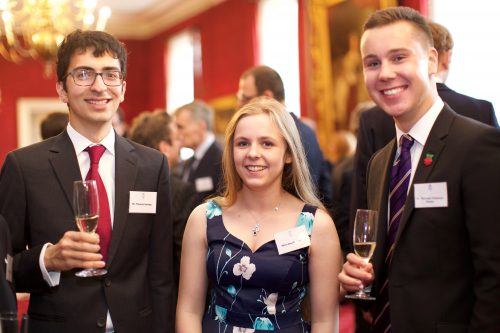
Matt was invited to St James’s Palace and the Houses of Parliament as part of the Raspberry Pi community celebrations in 2016
Joining the community
In a recent interview at Hills Road Sixth Form College, where he is studying mathematics, further mathematics, physics, and computer science, Matt revealed where his love of electronics and computer science started. “I originally became interested in computer science in 2012, when I read a tiny magazine article about a computer that I would be able to buy with pocket money. This was a pretty exciting thing for a 12-year-old! Your own computer… for less than £30?!” He went on to explain how it became his mission to learn all he could on the subject and how, months later, his YouTube channel came to life, cementing him firmly into the Raspberry Pi community
Website: LINK
